The GCI CUSP consortium has recently started to compile a list of all known publications, PhD’s and talks resulting from the first Grand Challenge Initiative CUSP. The list is not exhaustive, but we’ll try to get there eventually as inputs arrive from all PI’s and participants.
Category: GCI CUSP
Updated July 5th: GCI CUSP 3.0 “Solar Max” meeting @CEDAR 2023
Andøya Space is organizing a meeting on the proposed follow-up to the GCI CUSP project (2018-2021) – GCI CUSP 3.0 “Solar Max”, at the ongoing CEDAR Workshop 2023 in San Diego, CA. June 27th at 1.30PM as stated in the official program 2023 CEDAR Workshop Agenda | CEDAR (cedarscience.org)
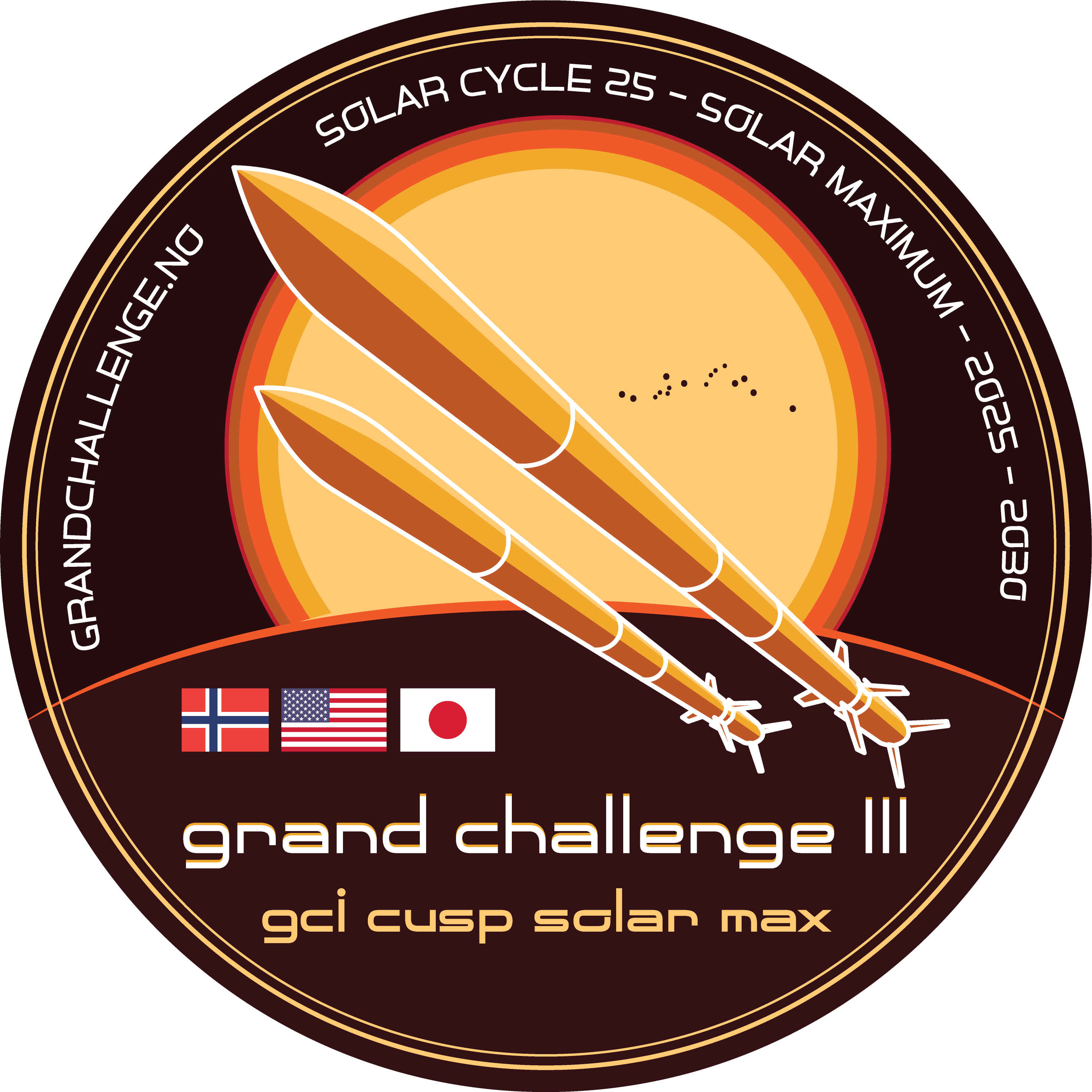
Short summary from the CEDAR meeting, June 27th:
Participants from NASA, Andøya Space (ASP) and universities from both sides of the Atlantic. Presentation by Blix regarding the former CUSP project ended in 2021, expected available infrastructure for a new CUSP version and why it’s important to establish a “Solar Max” version before vital infrastructure will be removed from Ny-Ålesund, Svalbard due to no planned use.
Several GCI CUSP “Solar Max” related rocket proposals will be submitted in the time to come.
After a short discussion the agreement was that we should plan for a dedicated session at AGU Fall Meeting 2023. Updates on this in due time at this website.
Info from the workshop on “Possible new collaboration: Grand Challenge Initiative CUSP “Solar Max””
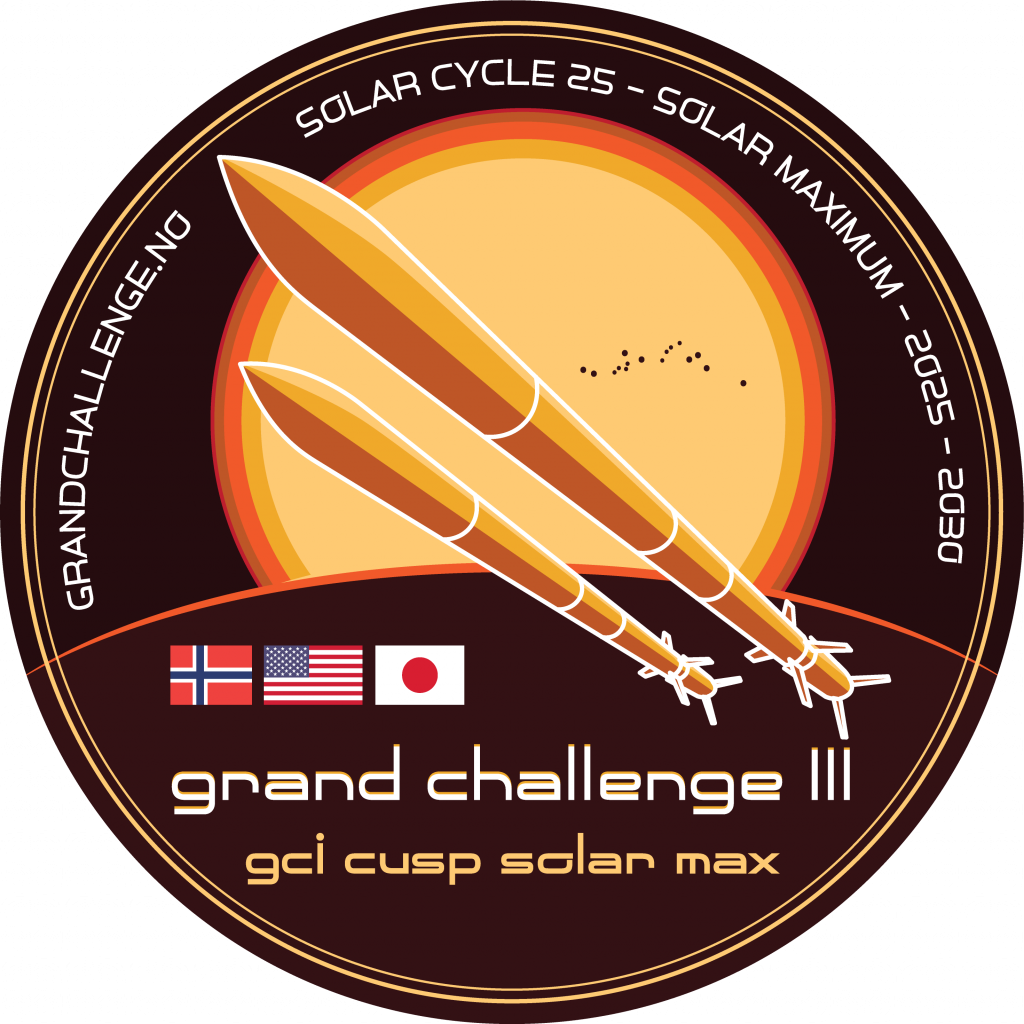
Yesterday evening, in Chicago during AGU Fall Meeting, we had a successful workshop on the proposed GCI CUSP follow-up project “GCI CUSP 3.0 Solar Max”, and as a short notice to you all before X-mas I can inform you that a solar max version of the highly successful CUSP (solar min) project is both timely and scientifically justified with regards to:
- new and remaining questions
- ensure access to scientific infrastructure that could otherwise be made unavailable if there are no future projects that can make use of it
- new and upcoming ground-based/space based infrastructure
The proposed timeline is first launches around 2025-2026, but this is off course dependent on the missions being funded in the time to come.
Present at the meeting were representatives from NASA Hq, Norwegian Space Agency, Andøya Space, NASA GSFC, NASA WFF, U of New Hampshire, U of Tromsø, Clemson Uni, Dartmouth College, JHU/APL.
We will also work to get more nations into the new GCI CUSP. The former one consisted of USA, Japan and Norway only.
To ensure the necessary progress, we will also use physical meetings in this project, in which case AGU Fall Meeting and CEDAR are two good candidates. If there are more European participants, we can also consider including EGU, but only time will tell.
More info to follow after X-mas.
The last GCI CUSP rocket – CREX-2 successfully launched, Dec. 1st 2021
The CREX-2 sounding rocket mission was successfully launched from Andøya Space December 1st, 2021.
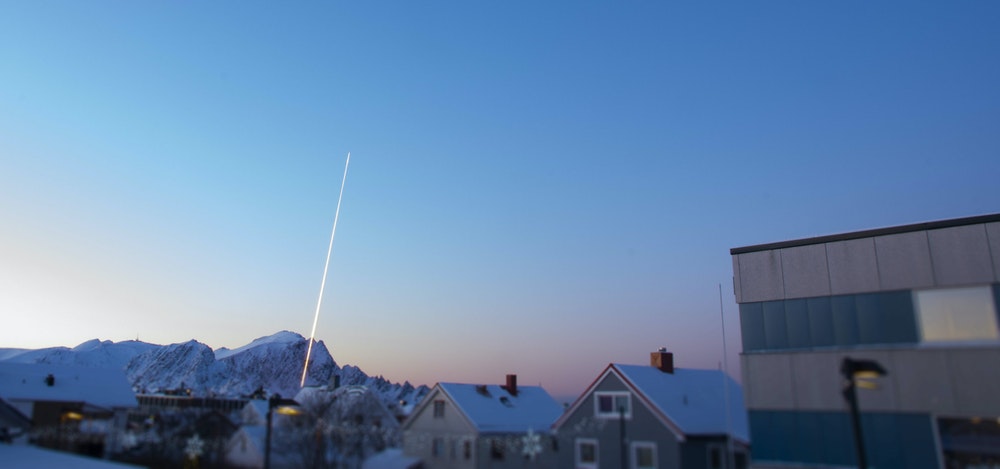
NASA’s Cusp Region Experiment-2, also known as CREX-2, is the final research rocket to launch in the international project Grand Challenge Initiative Project Cusp.
– The project consisted of 12 rockets from three nations, says Kolbjørn Blix, Director of Sounding rockets at Andøya Space. – USA, Norway, and Japan. The Japanese mission successfully launched about a month ago from our launch facilities at Svalbard.
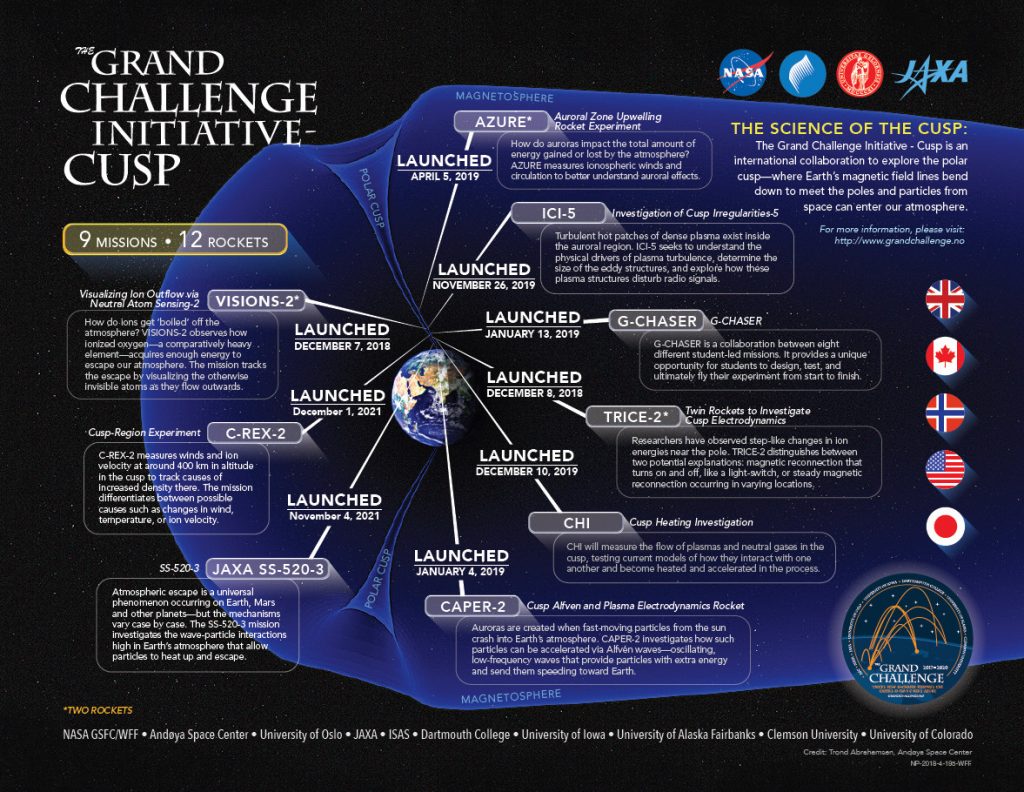
The main objective of the project is to investigate the polar cusp region, a region formed by Earth’s magnetic field.
– The magnetic field forms a kind of a funnel stretching from our atmosphere down towards Earth’s core, and inside this funnel the air is noticeable denser than elsewhere, says Kolbjørn. – This affects polar orbiting satellites, as they hit a kind of speed bump when they pass through this area.
The participants in the Grand Challenge-project share all their research data with each other, making it possible to achieve greater insight into this highly interesting cusp region.
CREX-2 is led by Professor Mark Conde from the University of Alaska Fairbanks, and the vehicle was built at NASA Wallops.
– The rocket carried 20 canisters of vapor tracers which was released into the atmosphere, says Kolbjørn. – Each of these canisters created a small cloud which was then observed by two ground stations at Svalbard and by an airplane flying out from Iceland.
– The movement of these tiny clouds observed from multiple angles will help scientists understand more about the physics in the cusp area, says Kolbjørn.
The sounding rocket was launched from Andøya on December 1st, at 0925 UTC, and reached an apogee at about 634 kilometers.
– The flight was nominal, and they launched into perfect scientific conditions, says Kolbjørn. – The scientists are very, very happy today.
(NASA web) Science at the Cusp: NASA Rocket to Study Mysterious Area Above the North Pole
The Grand Challenge Initiative – Explained
GCI CUSP & M/LT tag-up during AGU Fall Meeting
The GCI Cusp and M/LT core work group have scheduled a tag-up during AGU Fall Meeting.
Time and place: Moscone Posterhall south, Tuesday 10th from 2PM to 3 PM. Room number to be posted later.
GCI Cusp and M/LT talk at AGU Fall Meeting
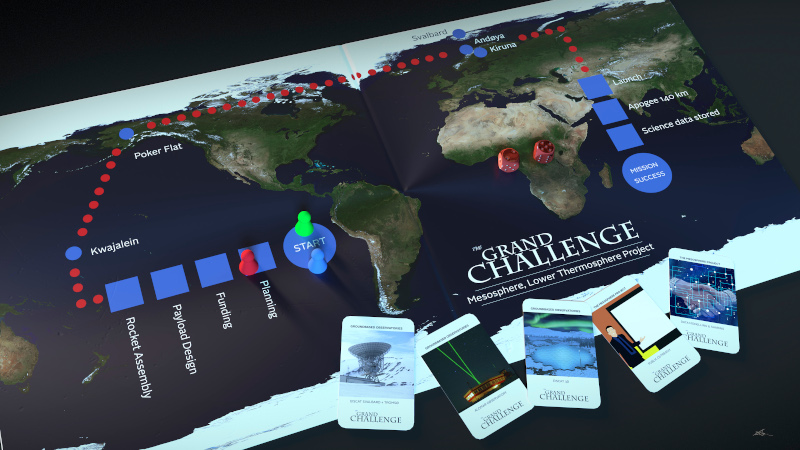
Kolbjørn Blix, Director of Space Systems at Andøya Space Center, and program coordinator of Grand Challenge Initiative CUSP and M/LT are presenting both projects (CUSP project status + M/LT plans):
Abstract ID: 486187
Abstract Title: Grand Challenge Initiative – CUSP and M/LT Projects
Final Paper Number: SM34A-01
Presentation Type: Oral
Session Date and Time: Wednesday, 11 December 2019; 16:00 – 18:00
Presentation Length: 16:00 – 16:15
Session Number and Title: SM34A: Earth’s Dynamic Cusps I
Location: Moscone South; 207, L2

